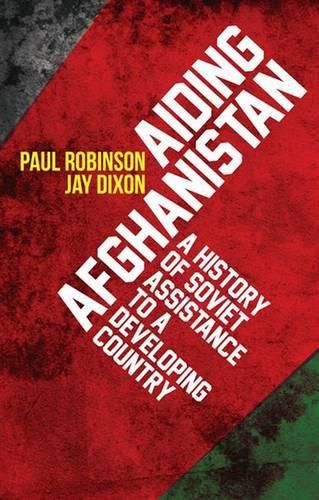Readings Newsletter
Become a Readings Member to make your shopping experience even easier.
Sign in or sign up for free!
You’re not far away from qualifying for FREE standard shipping within Australia
You’ve qualified for FREE standard shipping within Australia
The cart is loading…






For close to sixty years Afghanistan was one of the largest recipients of foreign development aid and yet it remains one of the poorest countries on the planet. The Soviet Union provided Afghanistan with large-scale economic and technical assistance for nearly twenty-five years before invading in 1979 and then increased the volume of assistance even further during the 1980s in an effort to prop up the government and undermine the anti-Soviet insurgency. None of this aid made any lasting difference to Afghan poverty. As in so many other countries, foreign aid did not promote economic growth. Using unexplored Russian sources, this book describes and analyses the economic and technical assistance programs run by the Soviet Union from the mid-1950s through to the collapse of the Soviet Union in 1991, and places them in the context of both Soviet-era development theories and more recent ideas about the role of institutions in fostering economic growth. In some respects Soviet development theorists were actually ahead of their contemporary Western counterparts in realising the centrality of institution-building, but they proved unable to translate their theories into practical solutions. The reasons why their assistance programs failed so completely in Afghanistan remain compellingly relevant today.
$9.00 standard shipping within Australia
FREE standard shipping within Australia for orders over $100.00
Express & International shipping calculated at checkout
Stock availability can be subject to change without notice. We recommend calling the shop or contacting our online team to check availability of low stock items. Please see our Shopping Online page for more details.
For close to sixty years Afghanistan was one of the largest recipients of foreign development aid and yet it remains one of the poorest countries on the planet. The Soviet Union provided Afghanistan with large-scale economic and technical assistance for nearly twenty-five years before invading in 1979 and then increased the volume of assistance even further during the 1980s in an effort to prop up the government and undermine the anti-Soviet insurgency. None of this aid made any lasting difference to Afghan poverty. As in so many other countries, foreign aid did not promote economic growth. Using unexplored Russian sources, this book describes and analyses the economic and technical assistance programs run by the Soviet Union from the mid-1950s through to the collapse of the Soviet Union in 1991, and places them in the context of both Soviet-era development theories and more recent ideas about the role of institutions in fostering economic growth. In some respects Soviet development theorists were actually ahead of their contemporary Western counterparts in realising the centrality of institution-building, but they proved unable to translate their theories into practical solutions. The reasons why their assistance programs failed so completely in Afghanistan remain compellingly relevant today.